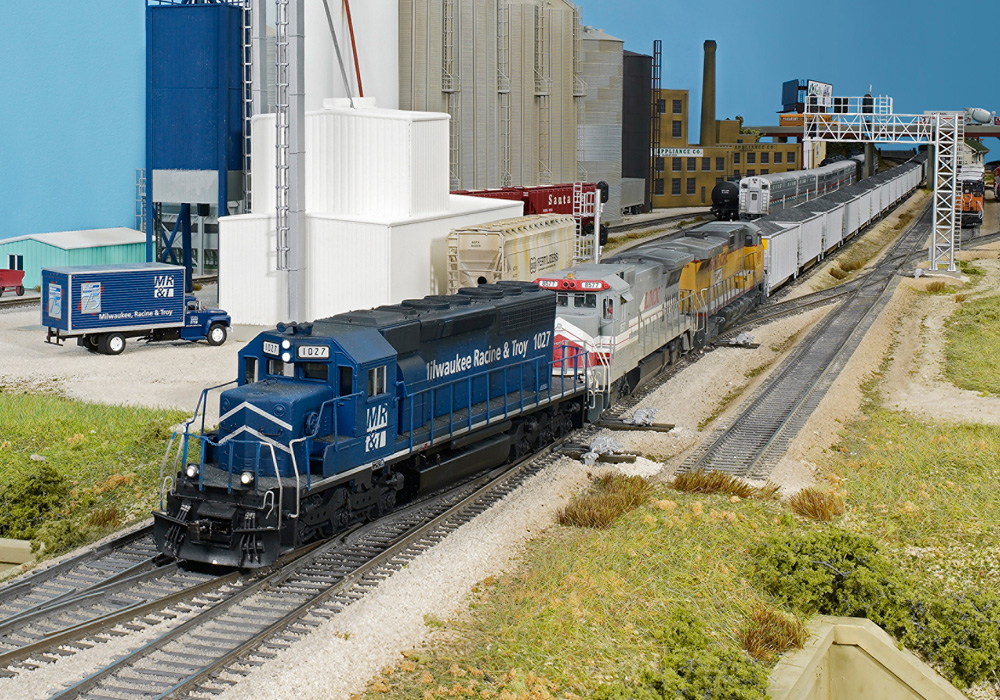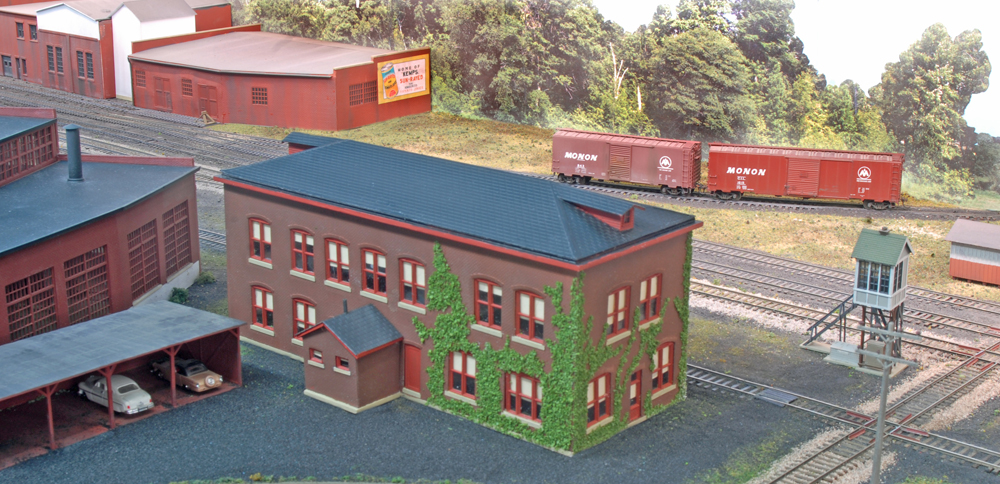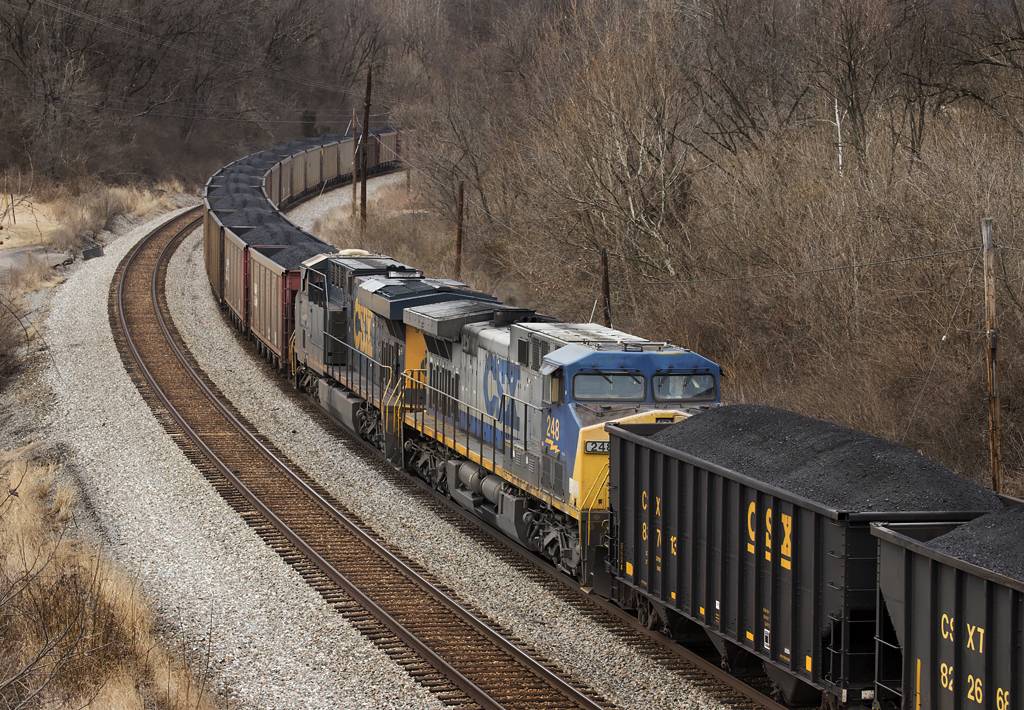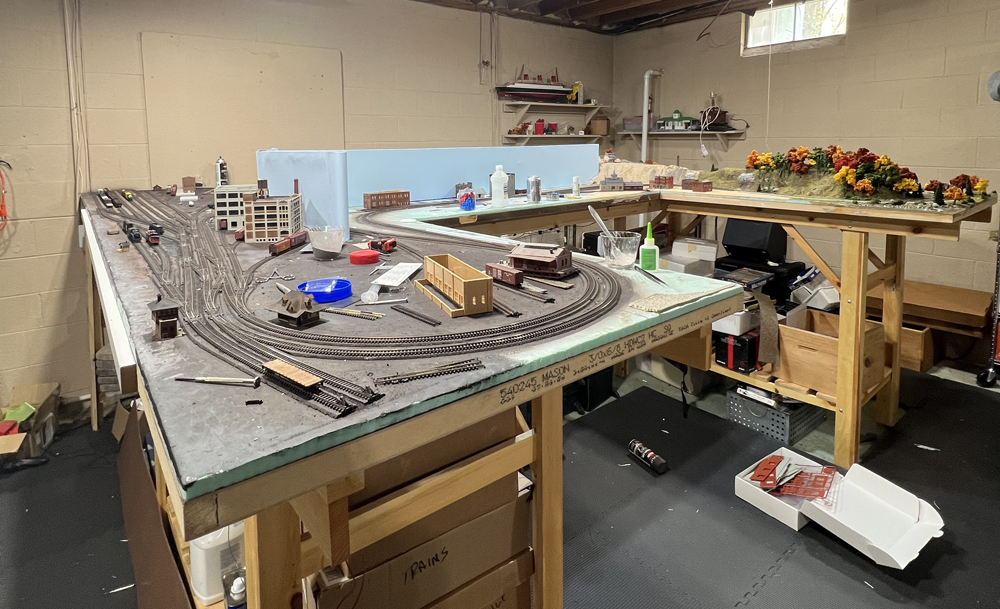The Fairbanks-Morse Train Master is one of the most popular locomotives of all time in toy traindom. This hulking engine, introduced to the model world in 1954 by Lionel, is right up there with the F3 and GP7/9 as one of the best-loved and most-produced diesels in the hobby.
Multiple companies make or have made models of the Train Master, including MTH, Williams by Bachmann, K-Line, and of course, Lionel. American Models offers it in S gauge.

Its fan base is legion and there are thousands of models out there. That’s pretty good considering only 127 Train Masters ever existed.
By contrast, General Motors’ Electro-Motive Division made more than 1,700 F3 A and B units, and north of 2,700 GP7s.
See how the Train Master ranks with other all-time great toy train locomotives.
The Fairbanks-Morse Train Master
When someone in the hobby says Train Master, it’s arguably most often pictured in the Virginian Railway’s striking blue-and-yellow paint scheme. It stands to reason as the line rostered the most F-M H-24-66s (its official designation) at 25. The “H” stands for hood; “24” for 2,400 hp, and “66” for the use of two 6-wheel trucks.
The Virginian hauled coal, and lots of it. It needed the world’s highest-horsepower diesel when F-M released the Train Master in 1953. Other “big” buyers were Reading; Delaware, Lackawanna & Western; Jersey Central; and Southern Pacific.
While primarily a freight locomotive, the SP and others found some success using it in passenger service. The engines accelerated quickly and had little trouble with heavy loads. Unfortunately, their opposed-piston prime movers – that had also powered U.S. submarines during World War II – needed a lot of maintenance. The big diesels were also prone to electrical problems.
A great model
Lionel’s postwar model is a beast in its own right and is still one of the most powerful electric trains ever made. It’s equipped with a big motor on each truck, Magne-traction, three-position reverse unit, headlights, and a battery-operated horn. The innermost wheels are flangeless, allowing it to operate on minimum O-31 curves. Don’t try one on O-27 track though; it won’t work.
While the Lionel No. 2331 is iconic, the No. 2321 Lackawanna in gray and maroon was the first model of the locomotive Lionel released in 1954. The ones with maroon-painted roofs are more sought-after by collectors and fetch higher prices due to scarcity.
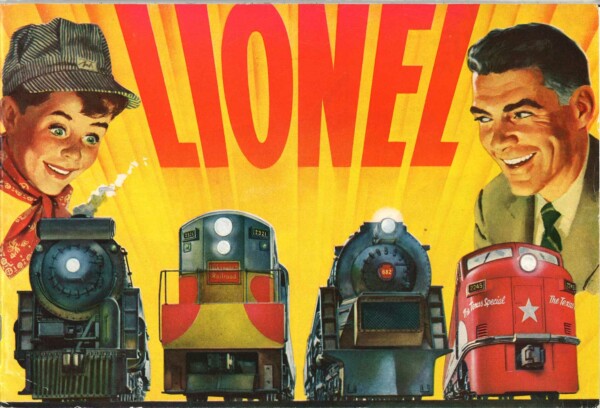
The Virginian models came out in 1955; some have black paint with yellow rather than blue.
One of the scarcest models is the 1956 No. 2341 Jersey Central Train Master. It sold poorly when released and was discontinued after a year. Today, it’s the highest priced of the original three.
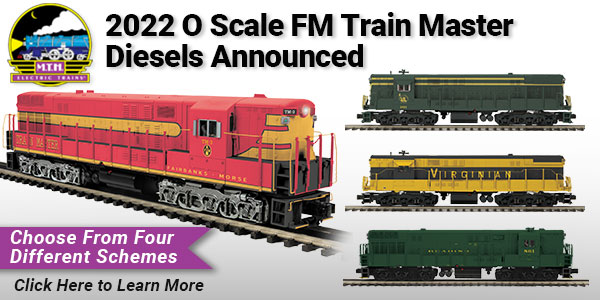
Lionel later made numerous versions of the Train Master, and MTH Trains and Williams have produced conventional and command-control versions. There are also true-to-scale models on the market. The first S gauge version of the model came from American Models in the early 2000s.
As proof of the model’s staying power, all makers except K-Line have offered the engine in recent years or are currently cataloging it. There’s one prototype H-24-66 left at the Canadian Railway Museum in Saint-Constant, Quebec.






